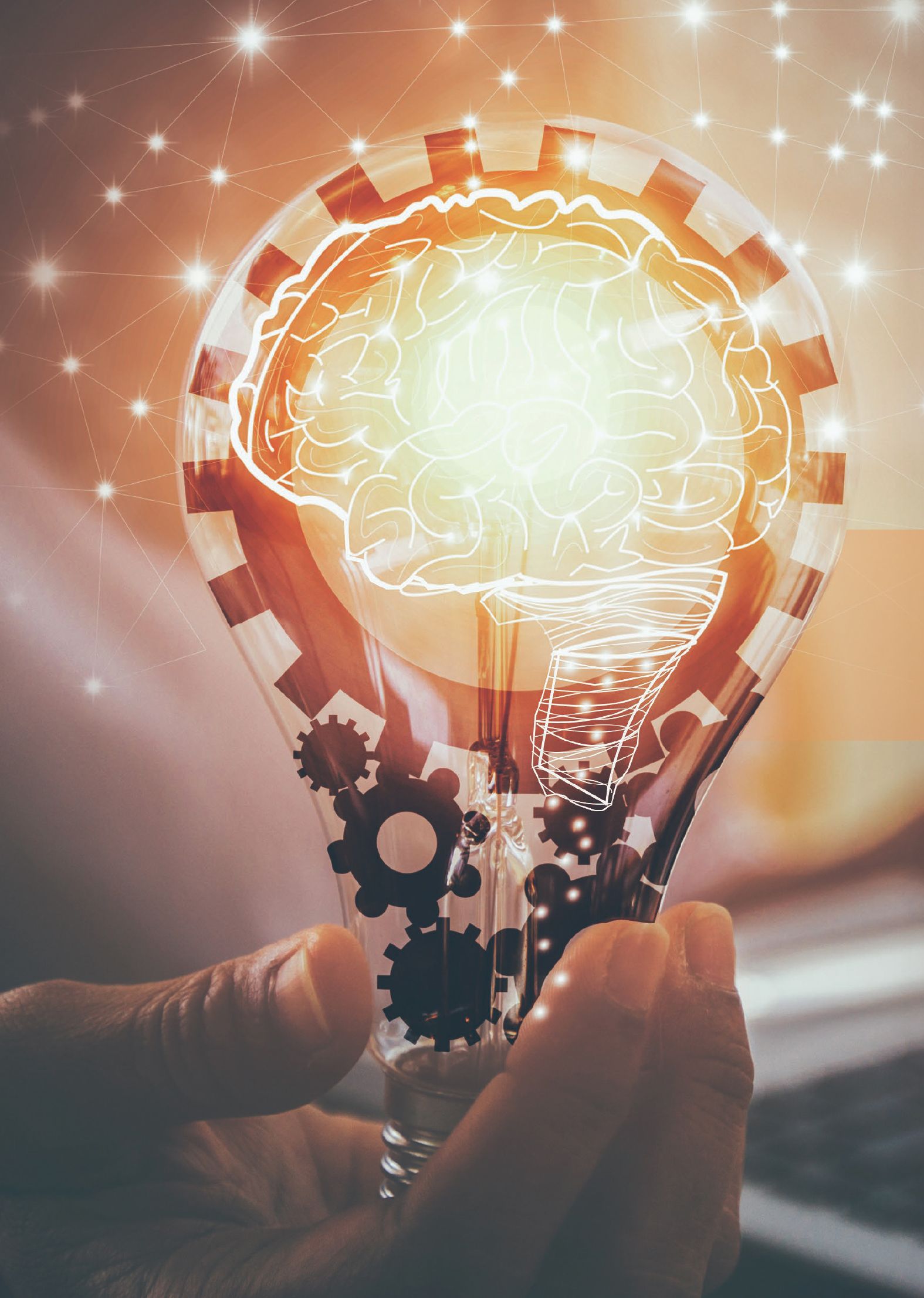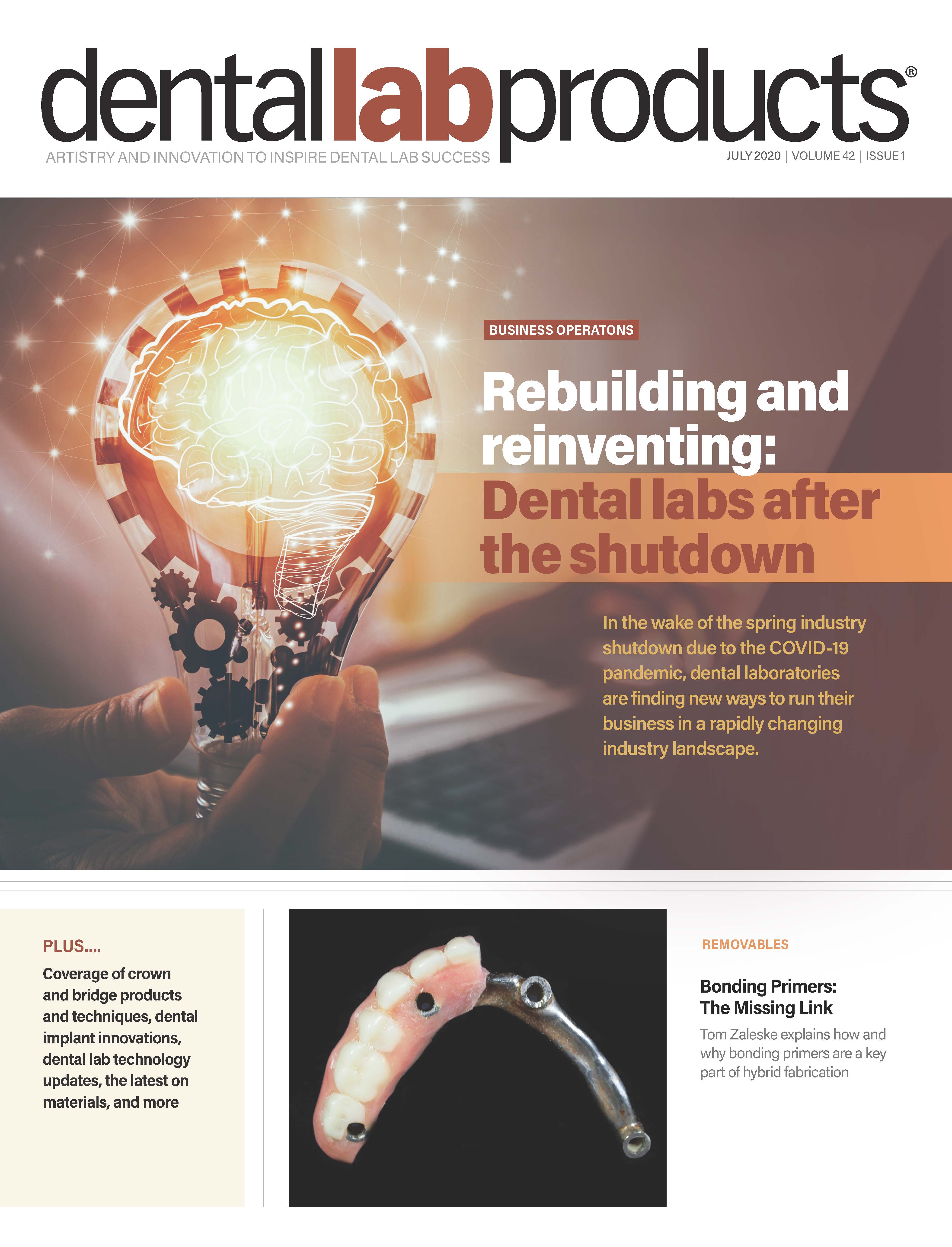Rebuilding and Reinventing: Dental labs after the shutdown
In the wake of the spring industry shutdown due to the COVID-19 pandemic, dental laboratories are finding new ways to run their business in a rapidly changing industry landscape.

It’s pretty safe to say no one had a business plan ready for the realities of 2020.
It almost feels like a lifetime ago that calendars flipped to 2020 with a solid economic foundation and a booming dental business for many practices and dental labs. Even as the Coronavirus was beginning to dominate the news in February, the industry still gathered in Chicago, and Lab Day was bigger than ever.
A few weeks later, of course, the bottom pretty much fell out of everything. In mid-March as most dental practices in the country were forced to close their doors to all but emergency cases, the stream of cases going to dental labs began to slow and then at some labs stop altogether.
It’s an economic crisis few expected, and the full fallout is likely to bring some lasting changes to every segment of the dental industry, especially on the lab side where many smaller labs were already facing challenging economic pressure from evolving technologies and larger competitors.
Dental practices have been open again for weeks or months depending on their locations, and labs are also getting back to business, but with financial plans for the year now looking like fantasies rather than goals, it’s a time for reassessment, retooling, and doing the hard work of getting back to where things were a few months ago; and hopefully recapturing some of the momentum that had been propelling the industry back then.
Navigating the shutdown
When business stopped coming in from dental practices, lab owners faced difficult decisions that often hinged on their pre-pandemic business model. For small boutique labs such as Tom Zaleske’s Matrix Dental Laboratory in Crown Point, Ind., there was no need to officially shut down and no staff to furlough, so he says he spent the first phase of the pandemic “cleaning, reorganizing, and reworking my fees and policy schedules.” Zaleske also made sure he continued to keep in contact with his clients and his colleagues.
It was a different story for Spartan Dental Lab in Lansing, Mich. where David Turpin largely shutdown his family-owned business from mid-March through May. It became impossible to keep employees on the payroll with little work coming in, so Turpin says he and his father finished up the last few cases, and then Turpin turned his focus toward diversification.
“I got on the phone and started calling anyone I knew that might be able to point me in the direction of manufacturing something else with the technology we have currently,” he says. “The goal being keeping the doors open and possibly bringing back employees because no one knew how long this would last.”
This led to some opportunities that are still being looked into, and the lab also began using its 3D printing capabilities to produce in demand personal protective equipment such as face shields, mask fitters, and ear savers. Turpin says he started these projects to keep the lab busy and was pleasantly surprised by the response he’s received.
“We had to start doing something to keep some cash flow moving through the lab. Once dentists in our area caught wind of what we were doing it spread like wildfire,” he says.
For Conrad Rensburg, owner and head of dental implants at Absolute Dental Services with four locations in the Carolinas, there was never a need to completely shut down operations. However, they did consolidate everything to the main branch in Chapel Hill and rotated teams so only one lab team was at work each day to facilitate social distancing.
With a large customer base including many DSO practices that did not completely shut down, Rensburg said his lab was still processing between 30 and 50 “emergency crowns each day. Also, like Turpin at Spartan, Absolute began 3D printing PPE, and Rensburg said they also helped customer source PPE and infection control products when their normal supply chains broke down.
Getting back to the bench
Of course, the dental lab industry’s unplanned pause didn’t last forever, and with most dentists back chairside, most labs are back to work as well. For Absolute, most of their clients have been back in their practices for more than a month and things are picking up again. However, recouping the losses from the industry shut down remains unrealistic, and Rensburg says he’s adjusted how he will evaluate his lab’s success this year.
“Obviously, 2020 sales target numbers are now nothing but a dream, so we are using year over year metrics to make financial decisions,” he says.
Even with some positive trends, Rensburg says the metrics from his lab truly show the hole the pandemic punched in his financial plans. His lab experienced a record month in February, but during the shutdown, the lab’s business was down an average of 85 percent from 2019 revenues, and then they experienced a busy June where in just the first three weeks they reached 91 percent of their June 2019 numbers.
Turpin says Spartan has seen business bounce back at a rapid pace. The lab is still operating with a little over half of its pre-pandemic staff, so he’s measured about what the current workload truly represents, but overall, he’s very pleased with what he’s experiencing.
"The rebound has actually been better than I had imagined it would be," he says. "Initially, I thought we were going to get a slow trickle of work, but that was not the case. The KPIs show we are up the first month back from where I predicted."
For the solo lab owner, the road back is very different, and Zaleske says the nature of his business with its focus on comprehensive cases and implant hybrids means he’ll need to have a bit more patience.
As dental practices are creating social distancing within their practices, spacing out appointments, and doing other things to provide care safely for both patients and staff, Zaleske believes they are seeing fewer of the types of cases that typically are sent to his lab.
“I believe since patients are no longer being stacked in office lobbies or in side by side operatories the pace of incoming cases that take hours per appointment are fewer,” he says. “Dentists have to decide how to best utilize their time since they cannot have multiple chairs working at the same time.”
At his lab, Turpin says the early cases they saw come through after reopening demonstrate the impact the lack of dental care access had on patients. Initial case submissions were mostly denture repairs, and now there are a lot of night guards coming into the lab as well. The implant cases finally started coming back in late June, and he’s noticed dentists are showing a renewed interest in digital technologies.
“I have had more inquiries from dentists asking about scanners and if I could give a recommendation,” Turpin notes.
Staying safe
With business starting to shift back to normal, labs are still operating their businesses during an active pandemic, and this has meant an extra emphasis on safety protocols. While a dental lab environment is not as big of an infectious disease risk as a dental operatory, infection prevention and proper sanitization is nothing new to dental labs.
Zaleske says he’s not seeing anything different in the way cases are being packaged or sent to his lab, and he’s kept his protocols the same. He treats every case coming into and going out of his lab as “hot” and takes proper precautions.
Of course, he doesn’t have a team of employees to manage, so social distancing is not a challenge. However, Turpin says he has his teams working on staggered shifts and practicing social distancing as precautions. Incoming cases are isolated and sanitized under new protocols to add extra precautionary measures, and technicians are wiping down their tools every day and disinfecting their entire workspace at least weekly.
At Absolute, Rensburg says they no longer take case pan deliveries, and new disinfection protocols are in place for when cases come in. The lab is shutting down for extensive cleaning and disinfection each day, and they are doing this themselves to limit the number of people who might come into the building. This move to not allow visitors is about keeping the staff safe, and with that in mind, Rensburg says they also provide masks to technicians who want them and do temperature checks on all employees when they arrive for work.
Moving forward
No lab seems to be coming out of the pandemic shutdown unchanged, but Turpin, Zaleske, and Rensburg all agree that there have been positive lessons to take away from this challenging experience.
For his small lab, Zaleske has really seen the value of communication, and he believes that his lab will benefit the most from technologies such as video calling which enables more interaction without the need for being physically close, as well as from communications platforms designed to streamline key messages to provide the most information in the simplest way.
Turpin believes the pandemic has put a spotlight on the importance of sound business practices for any dental laboratory. Going forward efficiency is going to be more important than ever, and labs are going to need to continue embracing innovations that can help accomplish tasks more effectively.
"I think it will be important to keep a keen eye on the KPIs, evaluating the metrics and making sure all policies and procedures are closely monitored,” he says. “It will be important to run in the most efficient way possible. Utilizing all types of technology to help fill any gaps."
At Absolute, Rensburg says he’s been surprised by the pace of the industry’s rebound, and his lab is seeing strong case numbers for all of their services, including the more complex surgical and hybrid cases. While he’ll continue to watch his lab’s metrics closely, he’s cautiously optimistic about the industry’s recovery.
“I am hopeful this trend will continue and that this was just not a bottleneck of cases we cleared out,” he says. “Being back open for almost 8 weeks, it seems the market came back quickly, and patients are not hesitant to accept treatment or show up for an appointment.”
